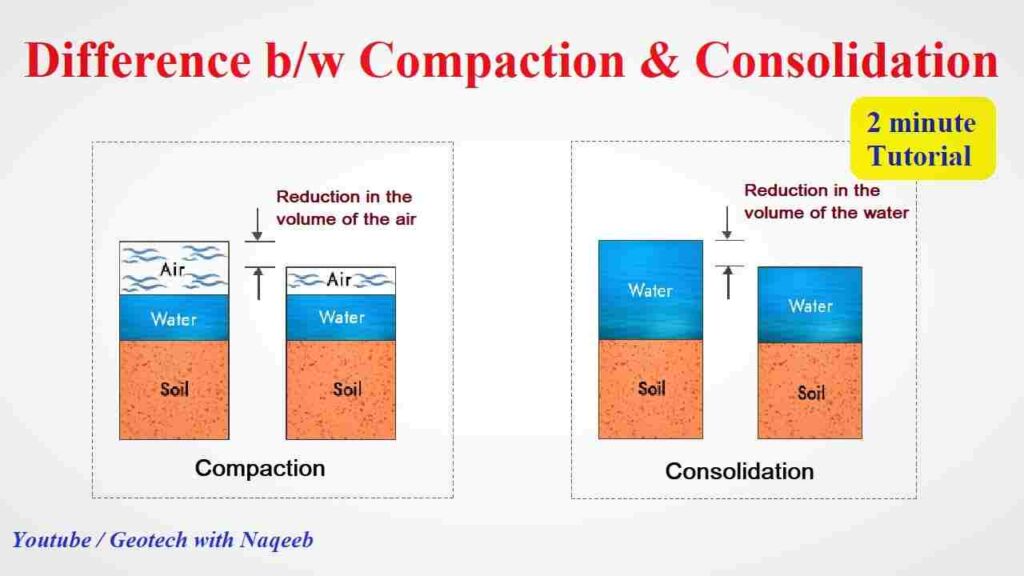
Explore 12 Key Difference between Compaction and Consolidation
Hello there! Have you ever wondered about the difference between compaction and consolidation? In this piece, we will delve into the dissimilarities between these two processes and shed light on how they impact various materials and geotechnical engineering projects. Let’s get started!
12 Difference between Compaction and Consolidation
Compaction and consolidation are two distinct processes commonly encountered in engineering and geotechnical disciplines. While they share some similarities, they exhibit fundamental differences that set them apart. Here are 12 key difference between compaction and consolidation:
Context: Consolidation happens naturally over time as a result of the expulsion of water from saturated soils, whereas compaction refers to the deliberate application of mechanical force to increase soil density and reduce voids.
Mechanism: To reposition soil particles and achieve densification, compaction depends on external energy such as vibration or pressure. Contrarily, consolidation entails the gradual release of excess pore water pressure from the soil matrix.
Timeframe: While consolidation is a time-dependent process that may take weeks, months, or even years to complete, compaction can be accomplished quickly, frequently within a short period of time.
Objective: By lowering settlement potential, compaction seeks to enhance the stability, load-bearing capacity, and permeability of soil. With consolidation, the goal is to slow down long-term settlement by letting extra pore water slowly evaporate.
Conditions of the soil: Consolidation is relevant to fine-grained, cohesive soils with high water content, whereas compaction is typically used in loose or semi-cohesive soils.
Energy input: Consolidation happens naturally without the need for artificial energy input, whereas compaction needs an external energy source like a vibratory roller or other compaction equipment.
Saturation: Both saturated and unsaturated soils can be compacted. Contrarily, consolidation only applies to saturated soils where significant pore pressure redistribution and water movement occur.
Volume change: While consolidation causes a decrease in void ratio as extra pore water is ejected, compaction primarily involves a reduction in soil volume as a result of densification.
Immediate effects: Effects that take place right away include reduced settlement potential, increased shear strength, and enhanced soil compaction properties. However, until excess pore water is eliminated and the soil reaches its final state, consolidation initially causes an increase in settlement.
Soil behavior: Compacted soils typically show little primary consolidation, but secondary compression caused by particle rearrangement is possible. Primary consolidation occurs in consolidated soils as extra pore water dissipates, causing settlement.
Application: Earthwork construction, paving, and land reclamation projects all make extensive use of compaction. In foundation engineering and the design of structures on soft ground, consolidation considerations are essential.
Remedial measures: Re-compaction or the replacement of unsuitable soil are two remedial actions that can be taken in the case of compaction. In contrast, consolidation-related settlement can be reduced by using preloading strategies or ground-improvement techniques like soil stabilisation or vertical drains.
Engineers, geotechnical experts, and construction workers must understand the difference between consolidation and compaction. It is possible to apply the proper strategies to ensure secure and effective project outcomes by being aware of the distinctive traits and behaviours of these processes.
Also Read: Explore 12 Key Difference between Cabinet and Council of Ministers